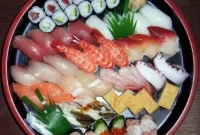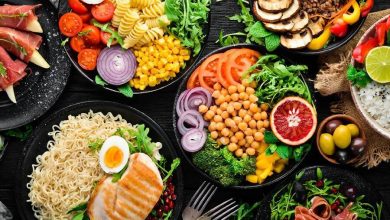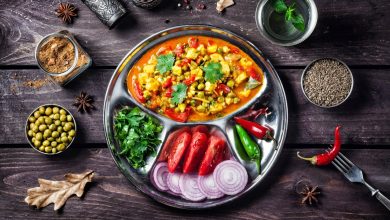5 of our favorite dishes
What to try in India: Indian dishes and sweets that we fell in love with
In India, food is very sensitive. In other words, they love to eat. As they say, “we know how, we love, we practice” is a national feature. Religious Indians generally have a number of rules and recommendations on when.
what and in what volumes to eat. They observe fasts, choose products “from trusted manufacturers”, keep old recipes and share food with the gods, leaving part of the meal at the home altar. Again, Ayurveda contributes its two cents.
They learn to understand countless varieties of rice almost from birth, each housewife has her own set of spices and it is perceived as part of a woman – she enters her husband’s house with it, passes it on to her daughters. So food is serious. And when it comes to Indian food – there is nothing better than going to someone’s house for dinner.
But such an opportunity comes across infrequently, to be honest. So the best thing to do is to go and try it all in cafes for locals, and not in tourist restaurants. I do not recommend drinking from decanters, which are cordially placed on the tables there – it is always from the tap and is safe only for local stomachs, but it is quite possible to try the national cuisine.
We remembered the most pleasant memories of our taste buds and made a small list. For yourself, for the benefit of people. It’s always nice to have landmarks with you in a new place.
So let’s go!
1.Dal fry
Dal is a lentil soup. Universal food for rich and poor, vegetarians and meat eaters, Muslims, Hindus and Buddhists. Residents of a lost village somewhere in Gujarat and Mumbai businessmen. Something worth trying when you want to feel like a real Indian. Prepared from a special variety of lentils – gave, onions, garlic, ginger and herbs. And, of course, spices.

What I don’t like is cilantro, but when it is sprinkled on a freshly brewed fragrant yellow soup, I am ready to eat it along with the roots. And Seka gave up until he got bored at all, refusing to try something new until now. That’s how it will start to turn back from his sight, so please bring your delights. Until then, no!
Once, in a fit of nostalgia, we were preparing it with Vanya and Tanya in Recto. It turned out, by the way, quite tolerably, even from ordinary Russian peas.
2. Touch
Chapati – that without which there is a dal – is simply a crime. Cakes made from coarse wheat flour, salt and water. Indian bread – unpretentious and simple, like India itself – but beating any of its brethren in popularity. Chapatis are always eaten freshly cooked over an open fire, hot and almost bland. They, like simple rice, create a balance in spicy and spicy oriental cuisine. And, of course, homemade chapatis cannot be compared with restaurant ones. If you are lucky enough to get somewhere for a homemade dinner – consider that you have won the lottery.
A moment of shame: how many times I tried to cook them both in India from authentic products and in Russia – they never turned out right. So you will have to go to India for chapatis, there will be something to answer the border guards to the question “The purpose of your visit”;)
3. Masala-tea
Let’s not reinvent the wheel – these three are must eat in India without any doubt.
Masala chai is a drink made from small-leaf black tea (almost rotten, we wouldn’t even brew it), milk, sugar and, of course, spices (who would have thought, huh?;)
Paradoxically, but the fact is that the cooler the restaurant where you order masala chai, the more likely it will be tasteless. There is some magic in this, do not hesitate and just trust.
We drank the most delicious, spicy, wonderful masala tea at a party (perhaps the charm of the hosts also plays a role here), but there are options. Go through the streets or to the market and look for uncles in a shop with a gas stove and a huge vat.
They, like conjurers, invariably pour tea from one empty glass into another in a thin but powerful stream, without spilling a single drop of the precious drink. Thus, tea is saturated with oxygen and acquires not only its unique taste, but also life-giving power. It usually costs 5-10 rupees and sets in a positive way.

4. Rice with cumin
Well, it’s impossible to talk about Indian cuisine without mentioning rice. Rice is the head of everything. After the chapati, of course;) There was supposed to be a biryani at this place (and he almost got here), but somehow it didn’t work out with him.
We tried it in different places, once I even cooked at home, but it didn’t work out, although many people love it. But rice with cumin – a relative of cumin – struck the first time. It would seem that it is easier to cook rice and add this spice, but not everything is so simple. Many times I ate it as an independent dish, why not. Well, if you add a mallei jacket or any kind of curry, you won’t tear it off by the ears. So let it be, yes.
5. Tail
Strictly speaking, thali is everything that I have listed (well, except for tea) + all sorts of additives. A kind of Indian set meal.
Again – a universal thing, they eat thali everything and everywhere. It looks like an iron tray on which rice is poured and there are many small iron cups.
The number of cups and their contents may vary. There will definitely be something very spicy (sometimes just a chili pepper in the corner), something very salty (pickily or chutney), something neutral (this is most often Kurd – something like natural yogurt) and something almost fresh (usually stewed vegetables).
Ordering thali in a new place when traveling in India is sacred, because thali is cooked differently everywhere, each region has its own characteristics.
We ate the most delicious thali in Munnar, a mountainous region with tea plantations. A couple of chapatis or unleavened rice buns are usually placed on the side next to the cups (strongly for an amateur, to be honest), sometimes sweets and papas are added as a bonus.



